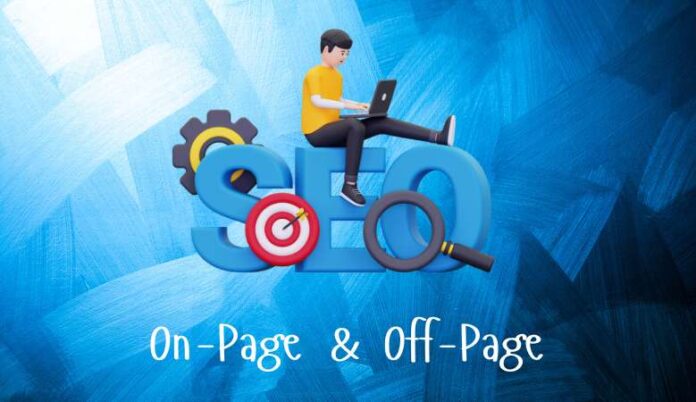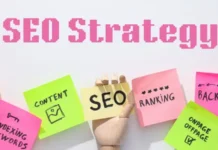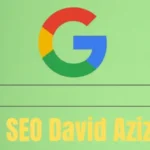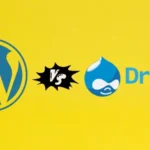Today we are going to talk about what On Page SEO is, that key tool for your website to appear in the top rankings on Google. Although there are three types of SEO: On Page SEO, Off Page SEO and Technical SEO, today we will focus on the first two, which are essential to improve the visibility of your page and attract more visitors.
What is On-Page SEO?
To understand what On Page SEO is , it is important to know the actions you can take within your website to improve its rankings in search engines. How can you identify the key aspects to optimize your page? Below, we will explain the essential factors that will make Google pay attention to you and place you in the first results.
1. Quality content
Content is the soul of your website. Why? Because for Google to value your page, it is essential that what you offer is relevant, useful and answers what your users are looking for. And how do we achieve that? By creating well-structured and original content. Not only will this attract more visitors, but it will also make people stay longer on your website, which is a good point in favor of your SEO.
2. Using keywords
Keywords are the terms that people type when they search for something on Google. Doing good keyword research will help you identify the most relevant phrases for your business or sector and strategically incorporate them into your content. Of course, it is essential that you use them naturally; it is not about repeating them meaninglessly, but rather integrating them in a way that search engines understand what your page is about and rank it better.
3. HTML tags
HTML tags are essential for organizing your website content and allowing Google to better understand it. Imagine you have a recipe page and your article is about “How to create Schema for website”:
- The H1 tag would be the main title, such as “How to Use Schema in Article.”
- H2 tags could be key sections, such as “Type of Schema” and “Step-by-Step types.”
- Within those sections, you could use H3 tags for more specific details, such as “News Article Schema” or “Person Schema.”
By doing this, you not only organize your content to make it easy to read, but you also help Google understand the hierarchy of information, which can improve your on-page SEO and make navigation easier for users.
4. Image optimization
Images are a great way to make your content more visual and engaging. But it’s not enough to just upload any photo, it’s important to optimize them. For example, if you’re posting an article about “Schema Markup”:
- Use descriptive file names , such as “schema.jpg” instead of “IMG_123.jpg.”
- Add alternative text, or “alt text ,” such as “Person Schema,” to help search engines and people with visual impairments understand the image content.
- Make sure to compress your images to reduce the file size, which will make your page load faster, improving user experience and on-page SEO.
Optimizing images in this way not only improves the speed of your website, but also makes the content more accessible and visible to search engines.
5. Loading speed
The loading speed of your page is crucial for SEO. Users tend to abandon a page that takes too long to load, which can negatively affect your rankings. To improve the speed of your site, I recommend using tools like Google PageSpeed Insights, which give you specific recommendations to optimize the performance of your page.
6. Responsive design
Nowadays, many people browse the internet from their mobile phones, so it is essential that your website is mobile-optimized. A responsive design ensures that your site looks and works well on different screen sizes, which improves the user experience and is a positive factor for SEO.
7. URL structure
URLs are the addresses used to access pages on your site. Having clear, descriptive URLs is not only beneficial for users, but also for search engines. For example, a URL like www.yoursite.com/healthy-recipes is more understandable than www.yoursite.com/page1 . Make sure URLs include relevant keywords to improve search visibility.

What is Off-Page SEO?
On the other hand, we have Off Page SEO , which focuses on all those actions you perform outside of your website but that have a great impact on its visibility and ranking in search engines. Why is it important? Because these activities help improve the authority of your site ,something that Google considers essential to rank you better in search results.
And what are these key factors of Off Page SEO ? Below, we will tell you the most important ones so that you can enhance your strategy.
1. Link building
Link building can be done in several ways, through manual links , which are those that you get organically by contacting other websites so that they link to you voluntarily. On the other hand, there are paid links , where you pay to be linked from other pages. Although this strategy can be tempting, you have to be careful, since Google penalizes paid links if they are not used properly. In the end, the most important thing is that the links come from quality sites and related to your sector so that they really add value to your Off-page SEO .
2. Presence on social networks
Although Google doesn’t directly use social media likes and shares to boost rankings, having a presence on social media is key to driving traffic to your website. The more you share interesting content on platforms like Facebook, Twitter, Tik Tok, or Instagram , the more people will reach your page, which can have a positive impact on your SEO. Ultimately, the more traffic you get, the more opportunities you have to improve your visibility in search results. So don’t underestimate the power of social media to attract visitors and give your website a boost.
3. Content marketing
Content marketing is key to driving traffic to your website from other platforms. It’s all about creating and sharing valuable content that gets people interested. For example, you can write guest posts on other blogs in your industry, create infographics that people want to share, or upload videos to YouTube that provide value. Participating in online forums or communities related to your industry can also be very effective. Imagine you have an online store selling organic products; you could write an article about “Benefits of Organic Food” on a popular food blog, which will not only bring you traffic, but could also generate links back to your website, improving your visibility.
4. Online reputation
Your online reputation can indirectly impact your SEO. Reviews and opinions left by users, whether on Google My Business or elsewhere, influence how your brand is perceived. A good example would be proactively responding to reviews, both positive and negative, which helps build an image of trust and professionalism. If, for example, you own a restaurant and receive positive feedback about your service and food, this will not only attract more customers, but will also increase your relevance in searches. Managing these reviews well will help you gain visibility and attract new visitors.
5. Collaborations and mentions
Collaborating with other websites, influencers , or media outlets can be a huge boost for your Off Page SEO . For example, if your brand is mentioned on a reputable blog or you collaborate with an influencer in your industry, you will not only increase the visibility of your business, but you could also get quality links that improve your ranking. Imagine you own a clothing store and you collaborate with a fashion influencer; if you are mentioned or linked to on their blog or networks, you will not only attract more traffic, but Google will see it as a sign of trust, improving your ranking in search results.
On-Page, Off-Page and Technical SEO are essential to improve the visibility of your website. Understanding what On-Page SEO is and how to optimize it will allow you to achieve better results.










![Imginn Instagram Story and Photos Anonymous Viewer Tool [Free] Imginn](https://www.iblogtech.com/wp-content/uploads/2023/09/imginn-150x150.webp)



